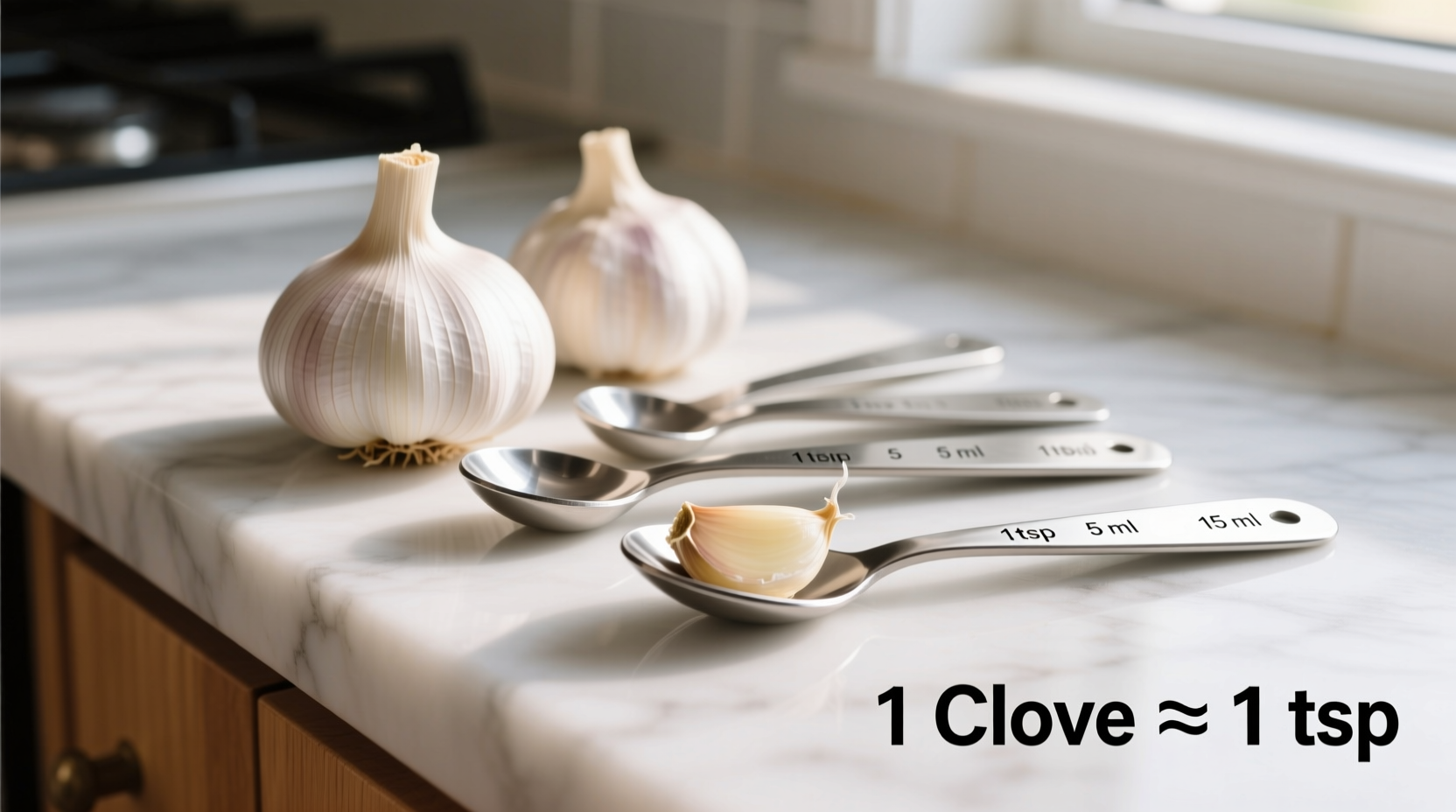When you're in the middle of cooking and your recipe calls for tablespoons of garlic but you only have whole cloves, knowing the exact conversion saves time and ensures perfect flavor balance. This precise measurement guide eliminates recipe guesswork and helps you achieve consistent results every time.
Understanding Garlic Measurements: From Cloves to Tablespoons
Garlic measurements can be confusing when recipes switch between whole cloves and volume measurements. The conversion isn't always straightforward because garlic clove sizes vary significantly. Understanding these differences prevents under-seasoning or overpowering your dishes with garlic's potent flavor.
Garlic Clove Size Matters: The Critical Factor
Garlic comes in various sizes—from small single-clove varieties to large supermarket bulbs. This variation directly impacts your conversion calculations. Professional chefs and recipe developers account for these differences to maintain flavor consistency.
| Garlic Clove Size | Minced Garlic Yield | Cloves per Tablespoon |
|---|---|---|
| Small (½" diameter) | ½ teaspoon | 6 cloves |
| Medium (¾" diameter) | ¾ teaspoon | 4 cloves |
| Large (1"+ diameter) | 1¼ teaspoons | 3 cloves |
This conversion chart reflects data from the USDA FoodData Central, which standardizes culinary measurements for recipe development and nutritional analysis. Professional kitchens use these standardized measurements to ensure consistency across dishes and service times.
Practical Measurement Techniques for Home Cooks
When converting garlic cloves to tablespoons in your kitchen, follow these professional techniques:
- The mince-and-scoop method: Mince your garlic cloves finely, then gently pack them into a measuring spoon without compressing
- The visual estimation technique: Recognize that one medium clove fills about half a teaspoon when minced
- The weight alternative: For precision baking or delicate sauces, use 9 grams of minced garlic per tablespoon (per American Association of Cereal Chemists standards)

When Volume Measurements Fail: Contextual Considerations
While tablespoon measurements work for most applications, certain cooking scenarios require different approaches:
- Roasting whole: Volume measurements don't apply—use whole cloves for milder flavor
- Infusing oils: Whole cloves provide gradual flavor release compared to minced
- Raw applications: Minced garlic has more intense flavor than crushed in dressings
- Long-cooking dishes: Whole cloves maintain integrity better than minced in stews
According to research published in the Journal of Culinary Science & Technology, minced garlic releases allicin (the compound responsible for garlic's flavor and health benefits) more rapidly than whole cloves, affecting both taste intensity and nutritional profile.
Common Recipe Substitution Scenarios
Understanding these practical conversions helps when adapting recipes:
- If your recipe calls for 2 tablespoons of minced garlic, you'll need 8-12 medium cloves depending on size
- When substituting jarred minced garlic (which often contains preservatives), use 20% less than fresh
- For roasted garlic puree, one head yields approximately 2 tablespoons of concentrated flavor
- Garlic powder conversion: ⅛ teaspoon equals one medium clove (use sparingly as it's more concentrated)
Professional Chef Tips for Garlic Measurement Accuracy
Seasoned cooks employ these techniques to ensure perfect garlic measurements every time:
- "Always measure after mincing, not before—garlic compacts significantly when chopped," advises Chef Michael Solomonov
- "For critical recipes, weigh your garlic—15 grams of minced garlic equals one tablespoon," recommends America's Test Kitchen
- "When in doubt between measurements, start with less—you can always add more garlic but you can't remove it," suggests culinary instructor Shirley Corriher
Frequently Asked Questions
How many garlic cloves equal 1/2 tablespoon of minced garlic?
Three medium-sized garlic cloves yield approximately 1/2 tablespoon of minced garlic. For small cloves, you'll need 3-4, while large cloves require just 2. The exact count depends on clove size and how tightly you pack the minced garlic into your measuring spoon.
Does the conversion change if I'm using roasted garlic instead of raw?
Yes, roasted garlic yields less volume than raw—approximately 25% less—due to moisture loss during cooking. You'll need about 8 medium raw cloves to produce 1 tablespoon of roasted garlic puree. The flavor intensity also decreases during roasting, so you might want to use slightly more than the standard conversion.
Can I use garlic powder instead of fresh cloves in the same measurements?
No, garlic powder requires different measurements as it's more concentrated. Use 1/8 teaspoon of garlic powder to replace one medium garlic clove. For 1 tablespoon of fresh minced garlic (6 cloves), substitute 3/4 teaspoon of garlic powder. Remember that powder lacks the moisture content and fresh flavor compounds of raw garlic.
Why do some recipes specify garlic by weight instead of volume?
Professional recipes often use weight measurements because they're more precise than volume. One tablespoon of minced garlic weighs approximately 9 grams. Volume measurements can vary based on how tightly garlic is packed, while weight provides consistent results regardless of preparation method. This precision matters especially in baking and delicate sauces where flavor balance is critical.
How does garlic size affect the flavor intensity in my dish?
Larger garlic cloves generally have milder flavor than smaller ones from the same bulb. However, older garlic develops more intense flavor regardless of size. When substituting different sizes, adjust your measurements accordingly—use 25% more large cloves if replacing small ones to maintain equivalent flavor intensity. The University of Minnesota Extension confirms that garlic's allicin content (responsible for flavor) varies based on bulb maturity and storage conditions.











 浙公网安备
33010002000092号
浙公网安备
33010002000092号 浙B2-20120091-4
浙B2-20120091-4